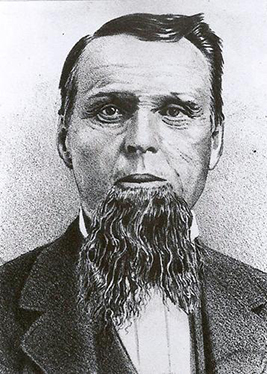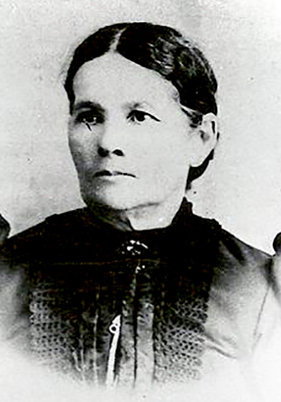It was the long-planned home…the realization of a dream they’s shared through years of hardship.
Isham Saling, born in 1830, set out with a team of oxen from Monroe County, Missouri in 1852. He came to Oregon across The Oregon Trail. He reached Salmon Falls, on the Snake River, where he traded his oxen for horses and began packing in to the Jacksonville mines. After three years he left the mines to try his hand at farming in Yamhill County, Oregon. It was there that he met and married Malinda Morton.

She too had come west in 1852, but in a wagon train departing from Bellville, Illinois, under the leadership of William Johnson. The group had encountered many hardships on the way to Oregon. Malinda was one of the few who recovered when cholera struck the party. Many others in the group died. Finally, they reached The Dalles, where the wagon train—nearly out of food—welcomed offers of fresh fish and eggs. From The Dalles, they launched for Portland on flat boats. Malinda’s family moved from Portland, which she described as “a small village with stumps still in the street,” to McMinnville.
After their marriage in 1856, the Salings farmed for several years in Yamhill county before pulling up roots and moving to the Walla Walla valley with all their livestock and worldly possessions.There they labored as farmers and ranchers until the hard winter of 1863, during which Isham watched many of his cattle starve to death that winter and from then on decided to confine himself to farming—which he did with great success.

In 1873 the Salings, by then one of the wealthiest families in Eastern Oregon, moved to Weston and Isham entered the merchandise business. He soon became a prominent businessman of the community, owning one of the largest businesses in the county. His other business endeavors included half-interest in the town’s brick hotel, three brick stores and a tract of land known as the “Saling Addition,” which was annexed to become the northern end of Weston. Isham also continued his farming on 230 acres near town.
Finally, the years of pioneering hardship were over and the Salings, with their 11 children, began to realize their grand home. It reflected their newfound permanence and their growing affluence for they built it staunchly of brick from the Weston brick yard, special ordering curved bricks for the window trim and importing fine furniture, woodwork, door and window frames from San Francisco and points beyond. A big square rosewood grand piano was shipped from Europe around the Horn to the West Coast and finally to the Saling house in Weston. The family traveled to California to select the carpet, furniture and upholstery.
The house, with its high ceiling rooms, beautiful woodwork, vast halls and spiral stairway leading to the rooftop cupola sun porch was constructed after a belvedered Italian Villa, an architectural style uncommon to the Pacific Northwest, but the theory is it resembled the East Coast Virginian houses where Malinda was born.